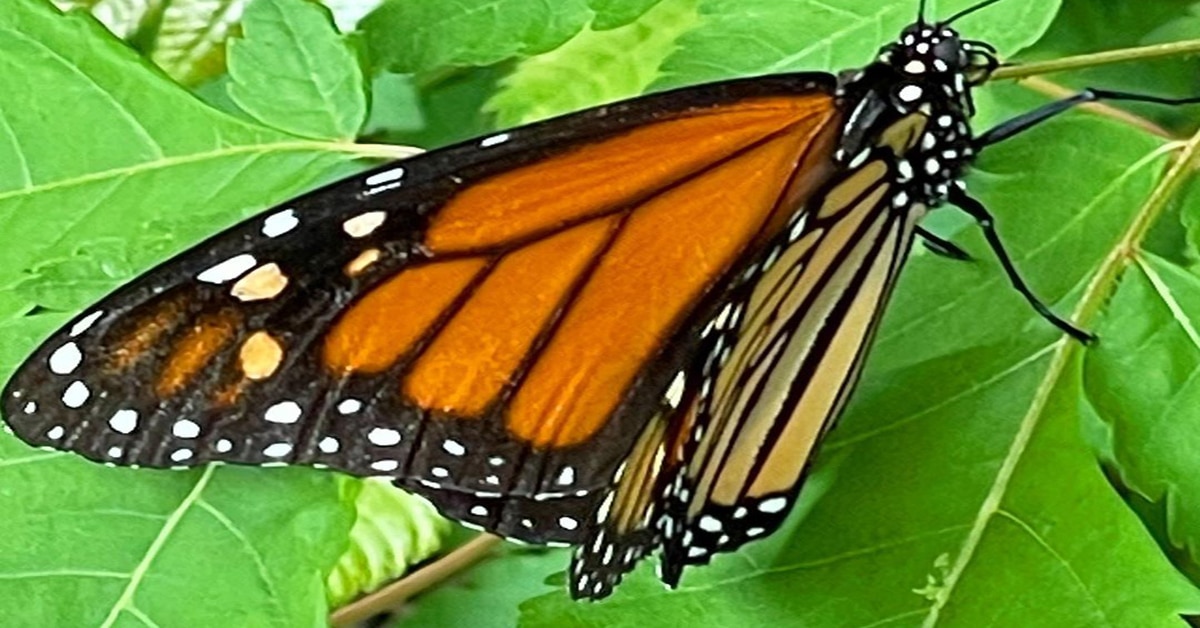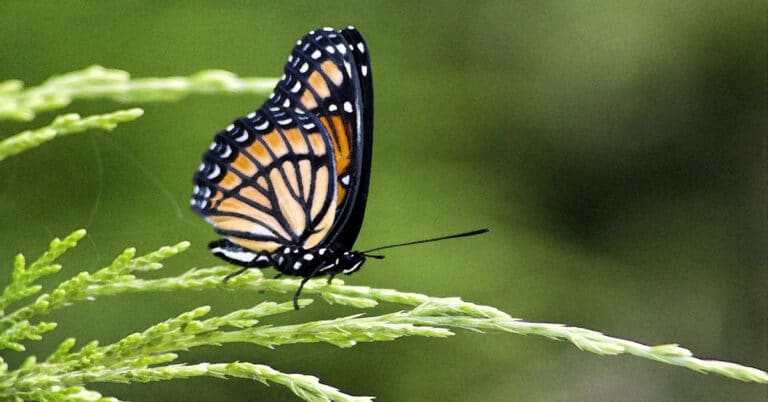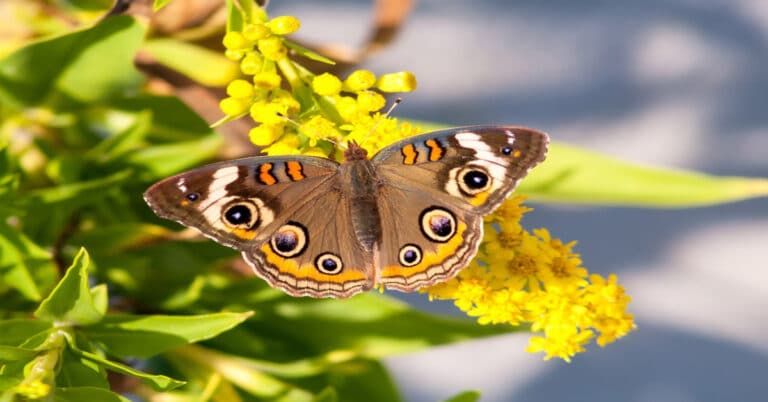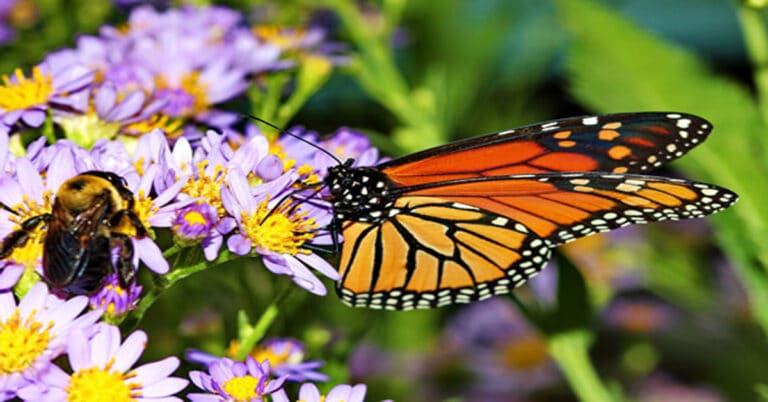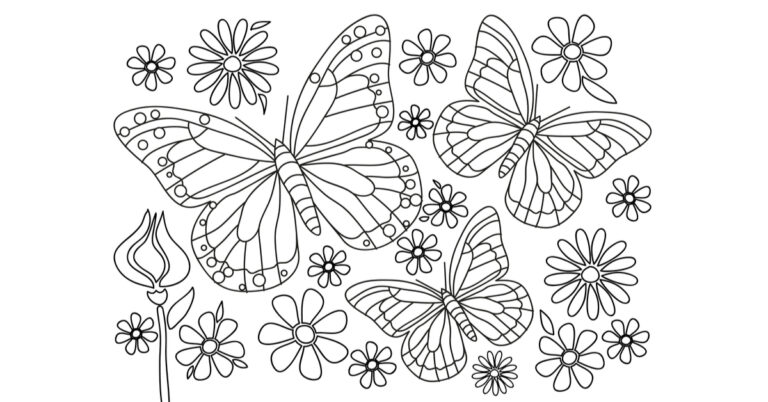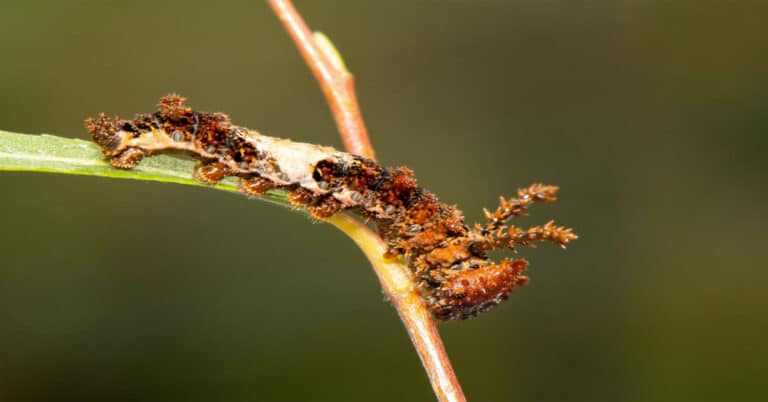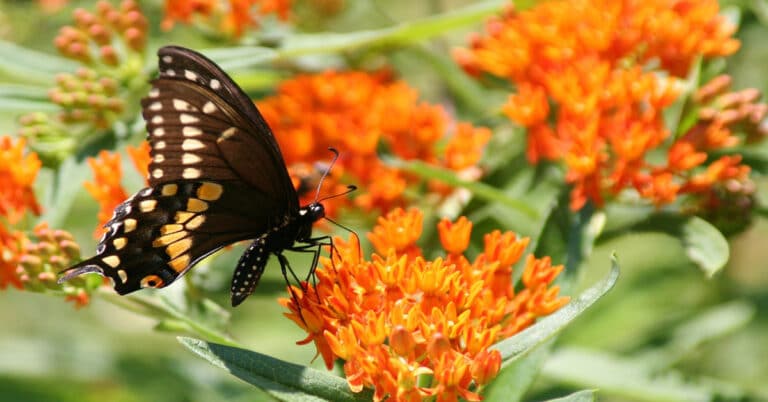How to Help Monarch Butterflies?
We humans, don’t know all the things that may help or harm Monarch Butterfly populations. Here is a list of five things we believe are currently threatening the Monarchs (and other butterflies), and what you can do to help.
1. Milkweed
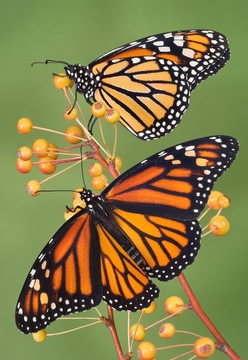
Since native milkweed species are the only food Monarch Butterfly larvae can eat, protecting this native weed is essential to prevent Monarch Butterfly extinction. All the different kinds of milkweed are hardy native plants that need little human help to survive. All we need to do is stop killing them. We can remove milkweed from crop fields and still allow it to grow between fields or in fallow fields. What we must do is stop spraying herbicides to kill native plants like milkweed.
In most of North America milkweed grows naturally and needs very little encouragement to sprout in any cleared field. If you buy milkweed from a plant nursery, these are the species names for the kinds Monarch Butterfly caterpillars eat:
Asclepias angustifolia, asperula, californica, cordifolia, eriocarpa, erosa, exaltata, fasciculari, humistrata, incarnata, nivea, oenotheroide, perennis, speciosa, subulata, syriaca, tuberosa, variegata, verticillata, vestita, viridis, Calotropis gigantea, procera, Sarcostemma clausa
2. Other Wild Flowers
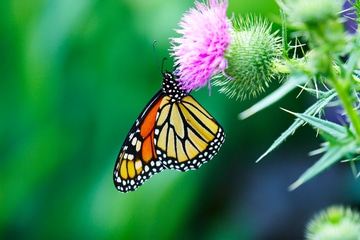
Some of the wildflowers adult Monarchs use for food need a little human care. Most do not. Red clover and alfalfa, which horses and cows can eat, are especially good because they also help replenish nutrients in the soil that has been depleted by producing corn, wheat, or grass.
Monarchs sip nectar from all kinds of flowers, as well as water and occasionally fruit juice. They give back to the plants from which they take food by pollinating their flowers. They pollinate milkweed. Here are some other plants Monarch Butterflies like:
Apocynum cannabinum (Indian Hemp), Asclepias spp. (milkweed), Aster spp. (asters), Buddleia spp. (Butterfly Bush; the scientific name is also spelled Buddleja and Buddlea), Cirsium spp. (thistles), Daucus carota (Wild Carrot or Queen Anne’s Lace), Dipsacus sylvestris (Teasel), Echinacea spp. (coneflowers), Erigeron canadensis (Horseweed), Eupatorium maculatum (Spotted Joe Pye Weed), Eupatorium perfoliatum (Boneset), Hesperis matronalis (Dame’s Rocket), Iberis spp. (Candytuft), Liatris spp. (Blazing Star), Medicago sativa (Alfalfa), Solidago spp. (goldenrod), Syringa vulgaris (Lilac), Trifolium pratense (Red Clover), Verbena bonariensis (Verbena), Vernonia altissima (Tall Ironweed), Zinnia spp. (Zinnia)
3. Pesticides
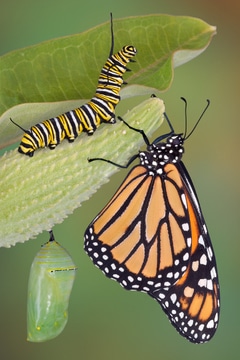
In addition to the herbicides that kill their food plants, some people spray insecticides, which are poisonous to insects (and harmful to other animals), into the open air. While their intention is usually to kill one kind of unwelcome insect, the long-term effect of using insecticide sprays is actually to make the unwelcome populations explode! Poisons that kill one animal also kill its major predators. Its major predators are bigger animals with longer life cycles.
For example, Mosquitoes that survive spraying will produce a new generation in two or three weeks. Paper wasps may produce a new generation in two or three months. Dragonflies will produce a new generation in a year or two. Wrens will produce a new generation in a year or two probably not near the site of spraying. When the new generation of mosquitoes hatch, their population will not be restricted by any of their major predators. Spraying poison on mosquitoes is likely to cause more itchy mosquito bites, not fewer. If people don’t want to be bitten, they need to encourage mosquito predators, rather than trying to poison mosquitoes.
Obviously, if you want to encourage butterflies, you don’t want to spray any kind of poison on any part of a Monarch Butterfly migration map. It’s hard to protect some crop plants, like peach trees, from some pests, like Peach Tree Borers, without using insecticides, but it is possible to paint the insecticide on the borers’ holes rather than spraying it through the air. If you want to avoid being bitten by mosquitoes, flies, gnats, and other pests, there are a few different repellent products you can rub on your skin, clothes, or hair; fresh cucumber peelings are among the most effective.
Insect bites are so unpleasant that many people lose track of the difference between insect friends and enemies. Large predatory insects like dragonflies, wasps, and mantises may look menacing (and some paper wasps do occasionally sting people), but actually, when they approach us, their intention is usually to eat some smaller insect that was interested in biting us. By learning more about these insects, and about other predators like spiders, frogs, toads, fish, and birds, we can be better allies to the animals who help us and find safer ways to avoid the ones who might hurt us.
4. Climate Change
Can anyone predict how the world’s climate may change in another fifty years? Before you become attached to any answer to that question, it helps to know that facts seemed to support several predictions about climate changes that were supposed to have happened years ago and have not happened.
However, by comparing temperatures between inner cities, suburbs, and rural areas, you can prove that human-affected climate change is real. When people cut down trees, pave over fields, and operate machines (urbanization), temperatures in the urbanized area get hotter. People find it harder to work or even to live in the city. So do animals, such as butterflies.
We all need to think about ways to reverse the damage urbanization has done. Merely moving urbanization to a different area will not help. What about walking instead of driving?
5. Habitat Loss
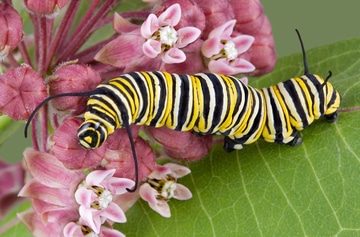
Monarch Butterfly’s habitat is not incompatible with humans’ needs. Butterfly gardens are pretty and can include plants humans use. The trees in Monarch Butterfly groves are valuable to humans as well as butterflies.
The problem is that Monarch Butterfly sanctuaries are such delightful places that people who visit them think they want to live there. That means that California towns like Pacific Grove, Pismo Beach, and Santa Cruz risk urbanizing in ways that could endanger the Monarch Butterfly preserves. Monarchs hibernate north and south (mostly north) of Los Angeles but seldom hibernate in Los Angeles.
In Mexico, the United Nations stepped in by buying the huge Monarch Butterfly Biosphere Reserve in Michoacan. Butterfly groves at Cerro Pelon, El Rosario, and Sierra Chincua are open to the public. People have limited access to the land in between these areas. This is not an option Californians are likely to want.
Conservation organizations, like the Monarch Butterfly Fund and the Monarch Butterfly and Pollinators Conservation Fund, try to help butterflies by buying land where Monarch Butterflies can live. This is difficult, when one butterfly may travel a thousand miles in order to lay a thousand eggs on a thousand separate milkweed plants.
Well-planned conservation efforts benefit other wildlife as well as Monarchs. Still, humans who live on Monarch Butterfly migration paths need to think about ways to balance our interests with those of the butterflies. Preserving butterfly populations does not necessarily mean giving up anything humans actually need.

Nato is a content writer and researcher with a background in psychology who’s eager to explore the wonders of nature. As a travel enthusiast and animal lover, she hopes to inspire others to discover and cherish the beauty and importance of the natural world.

